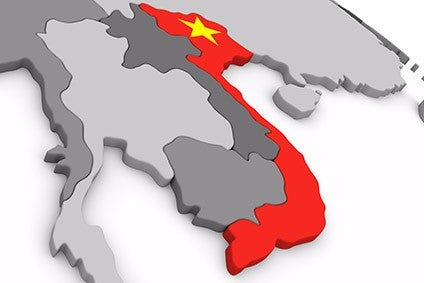
The visit comes as a recent white paper released from the World Bank, shows Vietnam was expected to register the highest trade and income gains, mainly due to the implementation of the Regional Comprehensive Economic Partnership (RCEP) which helped to partially mitigate the negative economic impacts of Covid in the East Asia and the Pacific region.
The report explains that among RCEP members, the analysis suggests that in an already deeply integrated region, tariff liberalisation alone brings little benefit, with estimated real income gains of 0.21% relative to the baseline (without the RCEP) in 2035. The biggest benefits accrue when the productivity gains are considered, increasing real income by as much as 2.5% for the trade bloc. In this scenario, trade among RCEP members increases by 12.3% in 2035 relative to the baseline.
The report also reveals the RCEP has the potential to lift 27 million additional people to middle-class status by 2035. It will boost wages, with faster gains in sectors that employ larger shares of women, the report explains.
It goes on to show that textiles, wearing apparel, meat products, food and beverages and chemicals are the sectors registering the fastest growth rates of exports. This is linked to both the reduction of tariffs and reductions of non-tariff measures.
World Bank vice president for East Asia and Pacific, Manuela V. Ferro discussed Vietnam’s development priorities and challenges with Vietnam’s Prime Minister Pham Minh Chinh, National Assembly Chairman Vuong Dinh Hue, and other high-ranking officials. She explained how the country can use support of the World Bank to achieve transformational and tangible improvements in the lives of the Vietnamese people.
Ferro said: “We are committed to working with Vietnam as it charts a renewed course towards ambitious development goals.”
She added: “Our partnership will focus on strategic areas that promote productivity-led, climate-resilient, inclusive growth, contributing the World Bank’s global and local expertise, embedded in evidence-based analysis and financing.”
Ferro and Prime Minister Chinh have agreed to produce a report together titled Vietnam 2045 that will aim to help Vietnam realise its aspiration of becoming a high-income economy by 2045. The report will take stock of reforms laid out in 2016’s Vietnam 2035 roadmap, analyse how Vietnam’s economic trajectory has been affected by the pandemic and other global mega-trends, and provide recommendations to inform policy reform discussions leading up to the fourteenth Party Congress, scheduled for early 2026.
“Vietnam’s development journey is evolving and so is the nature of our partnership,” said Ferro. “The World Bank will offer innovative solutions that address new development challenges and fit the unique profile of Vietnam’s development opportunities.”
Ferro also visited Ho Chi Minh City recently to broaden the partnership between the World Bank and Vietnam’s economic powerhouse. During a meeting with the Chairman of Ho Chi Minh City People’s Committee Phan Van Mai, the two sides discussed the challenges facing the city as it bounces back from Covid-induced recession and explored how it could mobilise knowledge and financial resources from the World Bank to boost its competitiveness and resilience. A joint HCMC-World Bank Working Group was formally launched to prepare an engagement plan for the coming years.
The World Bank’s current portfolio in Vietnam consists of 33 operations, worth a total of $5.72bn focused on transforming livelihoods and increasing infrastructure’s resilience to climate risks, education, health care, transport, energy, water resource management, and urban resilience. Since its re-engagement in Vietnam in 1994, the Bank has committed a total of more than $25.3bn toward financing Vietnam’s development.



